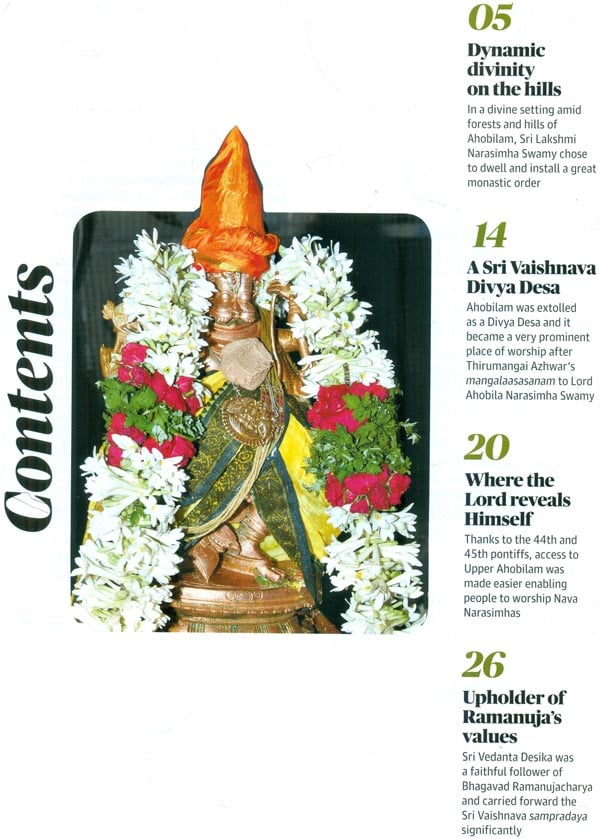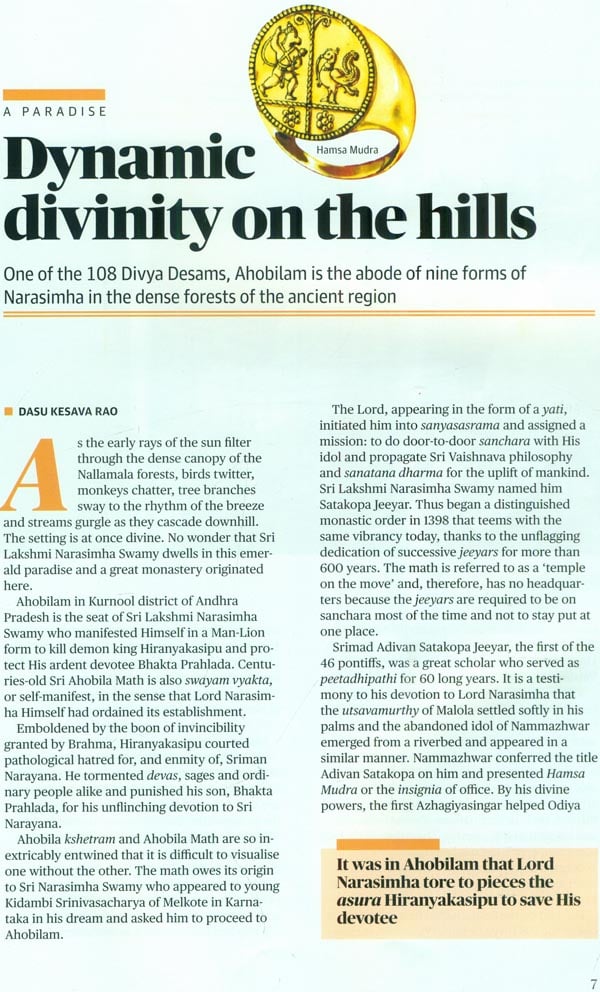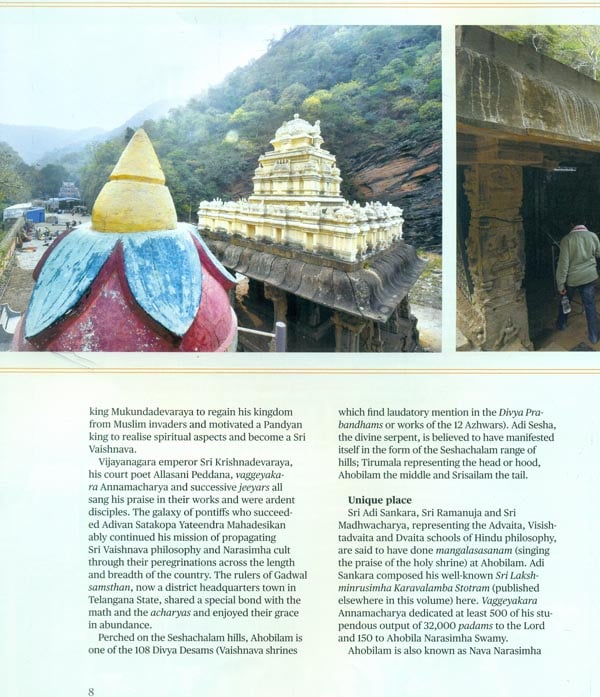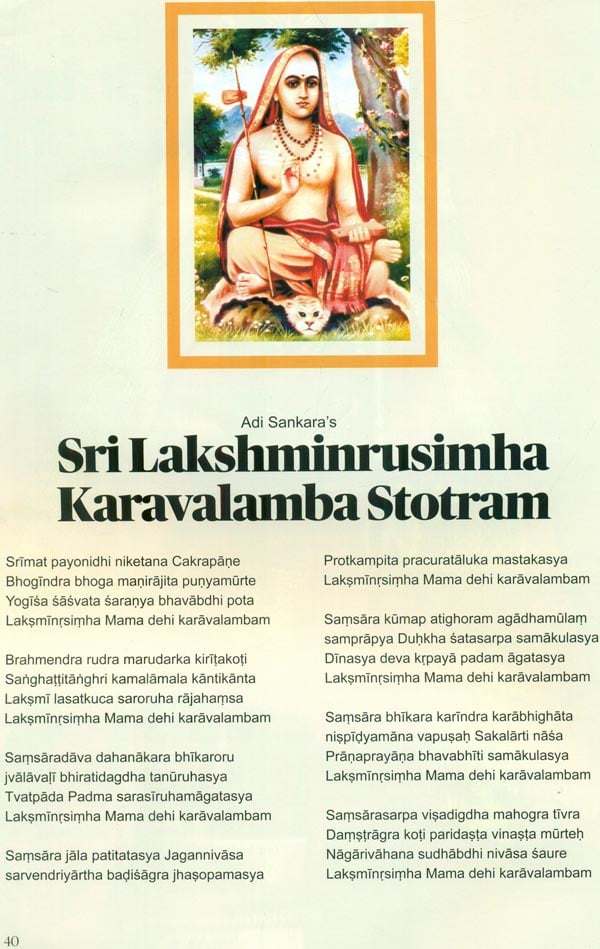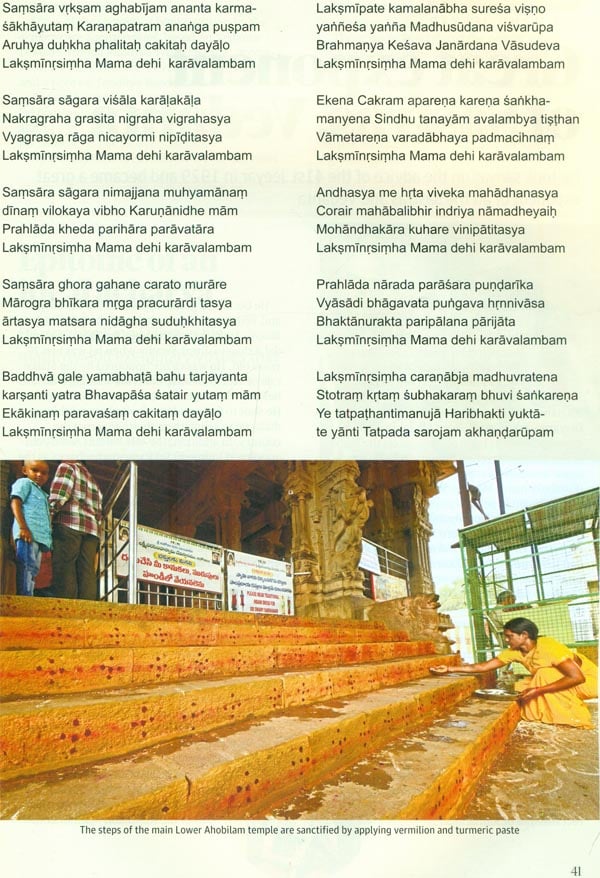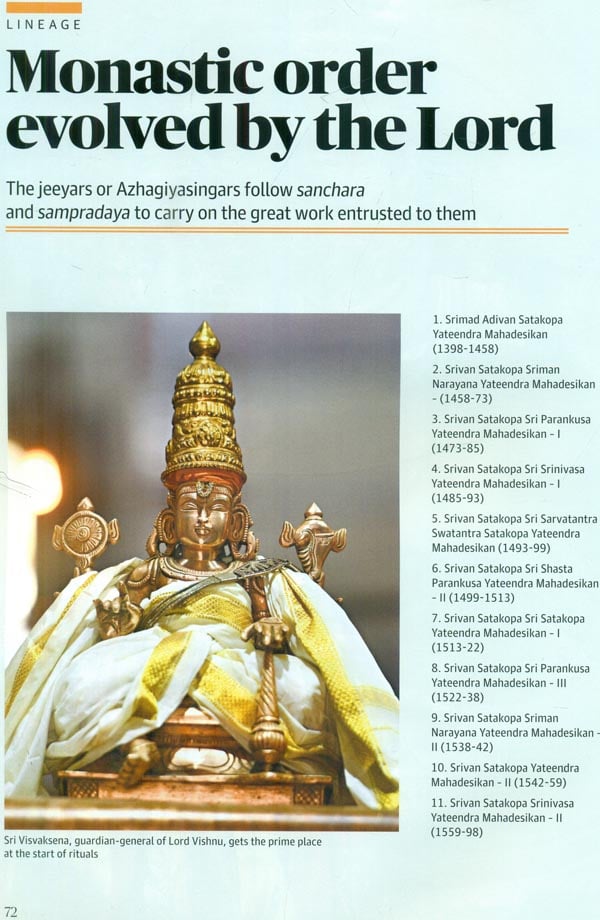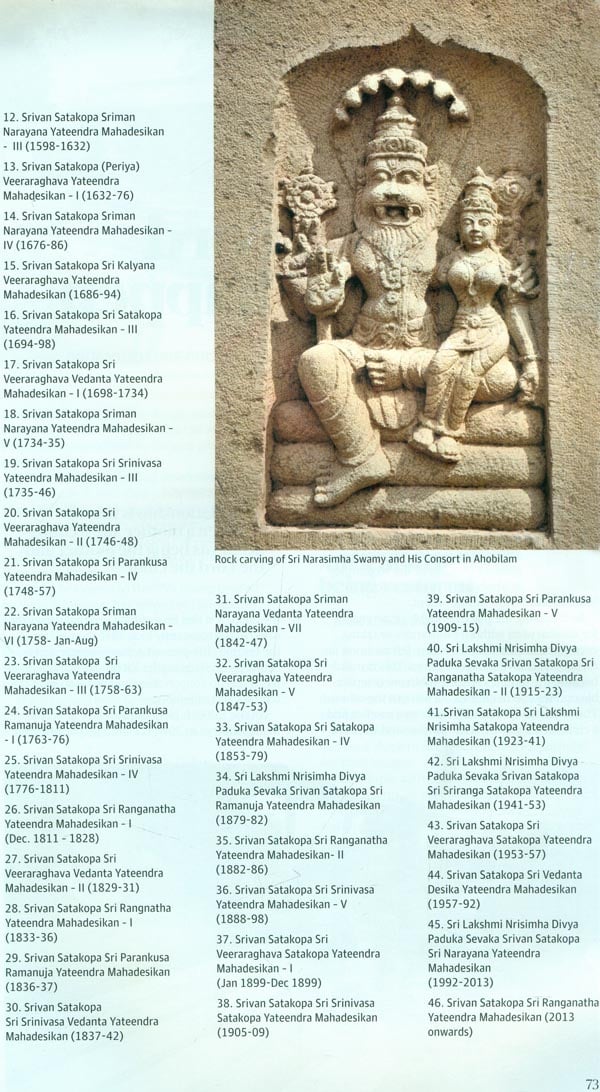
Ahobilam - Abode of Nava Narasimhas
Book Specification
| Item Code: | NAQ964 |
| Author: | Suresh Nambath |
| Publisher: | The Hindu Group |
| Language: | English |
| Edition: | 2019 |
| ISBN: | 9789387791381 |
| Pages: | 104 |
| Cover: | PAPERBACK |
| Other Details | 12.00 X 8.50 inch |
| Weight | 390 gm |
Book Description
This special volume offers insights into the history, traditions and practices at one of the most prominent Lord Narasimha temples and a centuries-old Sri Vaishnava monastery in Kurnool district of Andhra Pradesh, and Sri Ahobila Math, with a visual feast of pictures
Ahobilam in Kurnool district of Andhra Pradesh enjoys the unique privilege of having one of the most prominent swayam vyakta Narasimha kshetras and of being the cradle of a centuries-old Sri Vaishnava monastery of the same name.
According to the well-known account, Sri Mahavishnu assumed the form of Man-Lion to slay Hiranyakasipu to protect His ardent devotee Prahlada and others who were being tormented by the asura king.
The Ahobilam shrine's antiquity is rooted in the puranas, mythology and legends. Gods, sages, azhwars, kings and ordinary bhaktas worshipped or sang praise of the Lord at the shrine. According to the accounts associated with the shrine, Lord Siva pacified the ugra Narasimha Swamy by chanting Mantra Raja Pada Stotram, and Lord Sri Rama recited Panchamrutha Stotram to invoke His blessings while Sri Venkateswara Swamy installed the idol of Sri Lakshminarasimha Swamy and sought His blessings before His marriage to Padmavati.
Sri Adi Sankara, Sri Ramanuja, Sri Madhwacharya, the proponents of the Advaita, Visishtadvaita and Dvaita schools of Hindu philosophy respectively, Thirumangai Azhwar and vaggeyakara Annamacharya, not to mention Srimad Adivan Satakopa ]eeyar and his successors, hailed the glory of the Lord. Sri Sankara is said to have composed the Sri Lakshminrusimha Karavalamba Stotram, and saint-singer Annamacharya dedicated 150 of his stupendous output said to consist of 32,000 padams to Ahobila Narasimha Swamy, while Thirumangai Azhwar hailed the Lord in 10 pasurams.
Ahobilam is one of the 108 Divya Desams which find laudatory mention in the Divya Prabandhams. The kings of Pallava, Vijayanagara, Pandyan, Kakatiya and other dynasties helped spread the Narasimha cult and patronised the Ahobila Math.
The Ahobilam shrine and the Ahobila Math are inseparable: one cannot be imagined without the other. It was here that the Lord, assuming the form of a yati, is said to have initiated young Kidambi Srinivasacharya into the ascetic order, named him Satakopa Jeeyar and asked him to go door to door carrying his idol and propagating Sri Vaishnava philosophy and Sanatana Dharma. Thus, as recorded in its history, the Ahobila Math was born in 1398 to carry out the divine command. The math considers itself swayambhu, in the sense that the Lord Himself had ordained its establishment.
In an almost unbroken line of leadership spanning 600 years, the galaxy of jeeyars or Azhagiyasingars - from Srimad Adivan Satakopa Jeeyar to the present and 46th peetadhipathi, Srivan Satakopa Sri Ranganatha Yateendra Mahadesikan, have worked with unflagging dedication to fulfil the divine mission. The math throbs with the same vibrancy for this reason. It is interesting to note that the Ahobila Math is known as a Math on Wheels, for it is always on sanchara, as mandated by its tradition. The math has no headquarters as the jeeyars are not expected to stay put at one place, but be on the move. The math has branches in many parts of the country, mostly in Tamil Nadu, Andhra Pradesh and Karnataka.
The Azhagiyasingars were eminent scholars said to have been endowed with mystical powers. Among the miracles associated with the math are that the utsava idols of Malolan and the idol of Nammazhwar having materialised themselves in the outstretched hands of Adivan Satakopa Jeeyar, while the Sixth Jeeyar entered a cave, never to come out because the Lord wanted him to remain with Him and serve. According to legends, the jeeyars helped ousted kings regain their throne or scare away invaders and dacoits by creating the illusion of a pride of lions attacking them.
Sri Narasimha Swamy is present in nine forms at Ahobilam, namelyJwala, Ahobila, Malola, Kroda, Karanja, Bhargava, Yogananda, Chatravata and Pavana Narasimha. That is why it is also known as Nava Narasimha kshetram. Rising atop the hill is the Ugra Sthambham, an imposing pillar-like rock formation, from which Lord Narasimha is said to have emerged in a ferocious (ugra) mood to slay Hiranyakasipu. One can see a cleft dividing the mountain, through which, it is said, the Lord emerged.
The Lower Ahobilam temple, built in the Vijayanagara style of architecture, has exquisitely carved mantapams featuring sculptures that graphically depict Narasimha Swamy killing Hiranyakasipu, wooing Chenchu Lakshmi and seating His Consort on His lap.
**Contents and Sample Pages**
